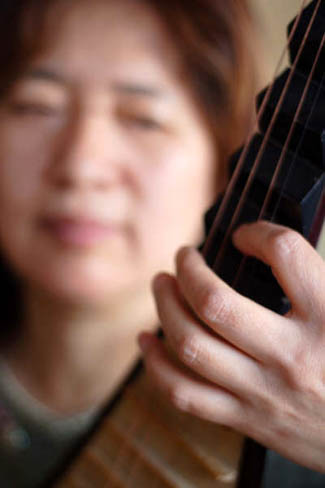Edifici Rectorat, 4a planta
| Schedule: | From Monday to Friday 9 a.m. to 8 p.m. |
| Free entry |

One out of two migrants is a woman. Likewise, in the ‘immigrants news’, women situation are not differentiated from the rest. If they do, it is usually as the subject or object of tragedies: victims of mistreatment; exploited by mafias of prostitution; small-scale delinquency; submissive, uncultured ... And her image is often associated with the topic of the exotic and traditionally feminine roles. In the collective imaginary configured from this form of representation, the stereotype "immigrant woman" promotes rejection or pity.
Studies that introduce gender as a variable discover a different and diverse reality. Without forgetting that nostalgia, pain or exploitation are, the intention of this exhibition is to contribute to the effort to make visible what is usually invisible.
Represent this non-news, which is closer to us than we imagined. Help eliminate fear that involves ignorance and transform the comparison and rejection in respect to the dignity and admiration of courage.
This non-daily story, told to 18 voices, wants to seek, beyond the subtle veil of difference, the friendly women who do not keep silent, the women who call in a low voice.

Is the role of sedentary guardian of the camp finished or did it never exist ? According to recent studies, one out of every two migrants is a woman. This trend, which characterizes global flows, is also followed in our immediate environment.
In the Valencian Country, and in other autonomous communities, fifty percent of immigration is woman. Hidden behind the universal masculine, this quantitative importance has no equivalent in its presence in the media. When ‘news about immigration’ is discussed, women do not appear differentiated. If they do, they are accompanied by tragedies: victims of mistreatment, women exploited by mafias of prostitution, small-scale delinquents, submissive, uneducated...
Its graphic representation is also sparse and distorted. If they show images of immigrant women illustrative of the news, those of an easily recognizable ethnic group are selected in their difference, by the color of the skin or by the clothing and, usually, in the exercise of traditional feminine roles: maternity, domestic work...
From these forms of representation it is derived that the cultural, ethnic and role diversity contributed by immigrant women is absent in the collective imagination. In addition to the loss in social enrichment that this diversity could imply, these perceptions are based on rejection or pity attitudes and migratory policies of plans and undifferentiated, if not xenophobic, more attentive to votes than to solutions. It could be the situation would be different if in the set of voters are included also the immigrants, to whom it seems obvious to demand the fulfilment of their civic duties and unthinkable to grant their full rights of citizenship.
Susi Artal











